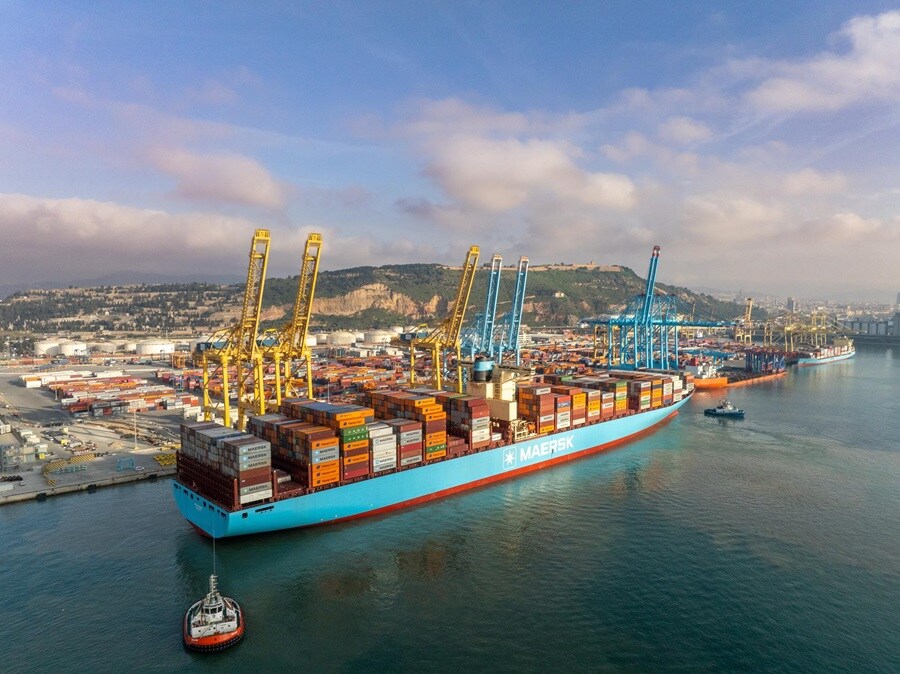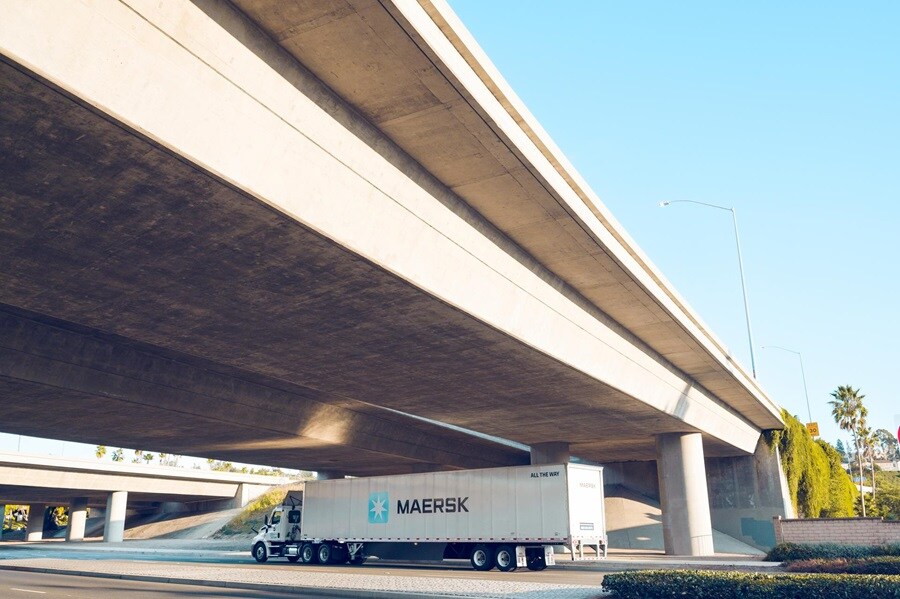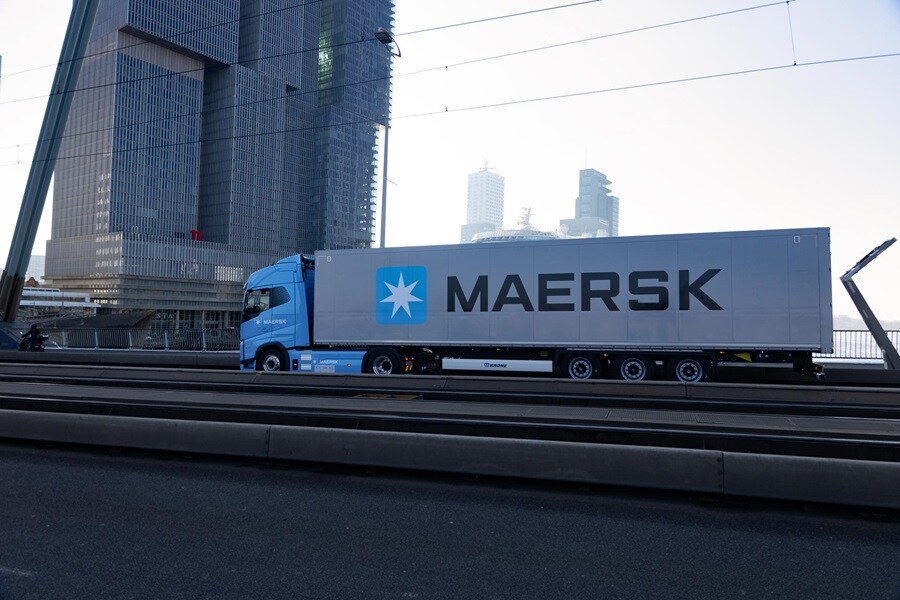
Ocean and Key Ports Update
Transpacific: Demand on the Transpacific trade has shifted in recent weeks, particularly on flows out of China to the US, as businesses adjust order volumes and shipment timing in response to evolving trade developments. In our ongoing commitment to maintaining stability and reliability for our customers’ supply chains, we have preserved full network coverage across the East-West (Gemini) network. Rather than canceling services, we are selectively adjusting vessel sizes to better align with current demand while maintaining schedule integrity.
We continue to stay closely connected with customers navigating this dynamic environment.
Some are moving forward with planned shipments, while others are exploring alternate sourcing markets or temporarily storing cargo at origin. Our goal remains to provide flexible options that support your supply chain continuity, whatever your strategy may be.
At the same time, we continue to see stronger demand into Canada and into the US overall from non-China origins such as Southeast and Northeast Asia. Some customers are advancing shipments or diversifying sourcing locations as part of their broader supply chain strategy.
Given the fluid nature of the market, we recommend booking early—particularly on services into Canada, where space is limited. If you’re exploring routing or sourcing adjustments, your Maersk representative can help identify options to keep your supply chain moving reliably.
Europe: Interest from North Europe and the Mediterranean remains high, with the first round of East-West Network vessels sailing at full capacity. In the East Mediterranean, feeder services are operating at max capacity due to cargo overflow, and we expect this to continue through this quarter. To keep your cargo moving, we’ve introduced more product options from origin. This gives you flexibility despite tight space conditions. Starting May 14, a Peak Season Surcharge (PSS) will apply for cargo from Turkey and Egypt to the U.S.; see the details here. You can optimize transit time by booking to Charleston or Savannah on our updated TA2 service. For cargo from Turkey, the TA10 direct service to the U.S. East Coast is now active and accepting bookings. If you're shipping to Canada, note that the CAE service will have several blank sailings in the coming weeks. Additionally, the CMA Paranagua will be out of rotation for dry dock repairs, with no current contingency in place. We aim to clear backlog cargo by June.
Indian Subcontinent, Middle East and Africa: Imports from India, Pakistan, and the Middle East saw varied demand in recent weeks, following announcements related to U.S. trade measures. We’ve seen additional vessel space open up across our India, Pakistan, and Middle East services, helped by a slowdown in China exports. If you have flexibility in your planning, this could be a good opportunity to move additional volume. South Africa imports remain largely unchanged, and we currently have capacity available for May. If you're considering increasing volumes, we’re here to support your planning. West Africa demand was soft in early April but may pick up. We anticipate tighter space in the coming weeks, so early bookings are recommended. East Africa imports remain strong. We have capacity available and expect demand to remain into May.
To receive the latest updates on your cargo, sign up for ETA notifications or check schedules on Maersk.com. For operational updates in our “Weekly Reader,” subscribe to our advisories at Maersk.com/newsletter.
Update on the USTR Section 301 review
On April 17, 2025, the United States Trade Representative (USTR) concluded its Section 301 investigation into China’s maritime, logistics, and shipbuilding sectors. As a result, the U.S. government will begin phasing in higher fees on Chinese-owned and Chinese-built vessels calling U.S. ports. While the rule takes effect immediately, fees are set at $0 for the first 180 days and will begin increasing from October 14, 2025.
At this time, we do not see a direct cost from this initiative impacting Maersk or our customers. We do not anticipate changes to our U.S. port rotations due to the new fees. Your current service plans remain unchanged.
We are monitoring developments closely and will keep you informed. Thank you for your support of our services and please contact your Maersk representative if you require additional information. We’re here to help you plan ahead.

Inland Update
Drayage capacity is currently available across all major markets to support both carrier haulage and merchant haulage needs. This includes long-haul drayage options, which may be helpful in bypassing rail congestion, particularly around the Ports of New Jersey, where delays are impacting intermodal cargo arrivals to inland container yards.
If you’re adjusting your routing through alternative loading or discharge ports, we can help align drayage resources to support those shifts. Secure depot storage for intact ocean containers is available at all major ports and inland locations.
This can support inventory build-up strategies, especially considering potential tariff changes.
Drayage and depot services are available for both Maersk and non-Maersk ocean shipments. Special demurrage and detention programs are in place for Maersk containers to provide added flexibility.
Less than Container Load (LCL) Update
Many U.S. importers are reassessing their trade strategies due to ongoing tariff impacts, and some have temporarily paused orders amid recent uncertainty. While overall market activity on Asia–U.S. lanes has moderated, demand for LCL has remained steady. LCL offers a flexible way to keep your supply chain moving, especially for smaller, critical shipments. It also helps manage tariff exposure by reducing the risk of overstocking inventory that may incur high fees.
Maersk LCL provides control, visibility, and speed through our integrated logistics network. Our position as the only LCL provider within the East-West Network (Gemini) allows us to prioritize loading and offer consistent performance from origin to destination. If you're reconsidering how to manage inventory flow in a shifting trade environment, LCL can be a practical and cost-conscious option.

Customs Update
As we shared earlier in this update, many U.S. importers are re-evaluating their trade strategies in response to the evolving tariff landscape. We see a range of responses, from shifting sourcing locations to exploring new compliance models. One trend we want to flag is the growing interest in Delivered Duty Paid (DDP) terms. While DDP may seem convenient to simplify shipping, it can increase risk and reduce control.
With DDP, duties and fees are still built into your commercial invoice, and U.S. Customs and Border Protection (CBP) considers these transactions high risk. That means you could face more frequent inspections, delays at port, and unexpected demurrage charges.
DDP and LDP (Landed Duty Paid) arrangements have also been linked to import fraud and are not recommended as a long-term solution for duty mitigation.
We also see customs brokers under pressure. The current environment has increased the processing burden, and some brokers are struggling to keep up. This has led to clearance delays, with some shipments incurring demurrage or even being moved to General Order (GO) storage. These hold-ups come at a high cost—and can often be avoided with proactive planning and the right support.
We know many of our customers are weighing options, from adjusting Incoterms to shifting origin countries or exploring bonded facilities and FTZs. As the regulatory environment continues to evolve, staying informed and building flexibility into your customs strategy is essential.
To support this, we invite you to join our upcoming customs and compliance webinar on May 13. The roundtable will feature insights from industry experts, including Janet Labuda, Head of Customs and Trade Issues at Maersk; Julie Hughes, President of the U.S. Fashion Industry Association; Laurie Dempsey, Acting Deputy Executive Director in the Office of Trade Relations at U.S. Customs and Border Protection; and Amy Morgan, Vice President of Trade at Altana. The panel will discuss topics such as forced labor enforcement, trans-shipment rules, and how importers are navigating the growing complexity of global trade regulations. Register here.
In the meantime, our Trade Services team is here to support your customs needs and help you stay ahead of potential disruptions. For assistance regarding U.S. regulations, please contact us at compliance.mcsi.nam@maersk.com.

Warehousing Update
Tariff developments are also prompting many businesses to re-evaluate how and where they position inventory. While some are holding off on changes, we see increased interest in warehouse capacity in Southern California and Canada and bonded and FTZ (Foreign Trade Zone) space to help manage duty exposure and maintain flexibility.If you are exploring ways to delay final customs clearance, improve inventory positioning, or support nearshoring and U.S.-based manufacturing, now may be a good time to review your warehousing strategy. We currently have available capacity in our Sumner and Burlington facilities and are working to expand bonded capabilities to meet broader demand, pending regulatory approval.
While short-term demand remains in line with expectations, the mid-to-long-term outlook may soften as tariff impacts evolve. We’re here to help you assess your warehousing needs and ensure your supply chain remains responsive and resilient.

Ground Freight Update
We continue to observe shifting dynamics in ground freight, influenced by changes in international shipment flows and evolving consumer demand patterns. These trends are affecting different segments of ground freight in different ways. For example, Full Truckload (FTL) and Brokerage are most impacted by the slowdown in international flows. Specialized LTL and Home Delivery are seeing pressure from reduced imports and softer consumer activity.
Many customers are taking a cautious, wait-and-see approach, particularly in response to tariff uncertainty. Some have paused new sailings from Asia, while others have pulled forward shipments ahead of potential tariff changes.
In parallel, we’re seeing renewed interest in bonded and FTZ warehousing solutions as businesses look for ways to manage inventory without triggering duties.
If your supply chain is affected by these shifts, there are a few ways to stay flexible. We’re helping customers rebalance their logistics strategies by focusing on domestic ground freight flows, supporting new storage needs through bonded and FTZ facilities, and using tech-enabled tools to track performance, analyze routing options, and respond quickly to changes. Our team is staying closely connected with customers—particularly those adjusting sourcing patterns toward Vietnam and Mexico—to understand how ground freight needs are evolving. These regular touchpoints help us align capacity, routing, and timing with your strategy.
While short-term demand remains steady, we see increased uncertainty in ground freight volumes for the coming months. Much will depend on how trade policy evolves. In the meantime, we’re here to help you assess options, adjust plans, and keep your supply chain moving efficiently.
Lead Logistics Update
As we previously shared in our update, North American businesses are responding to recent U.S. trade developments differently; some are maintaining current operations, while others are reassessing sourcing strategies to manage potential impacts. According to The Conference Board Consumer Confidence Index, consumer confidence is trending lower, and data from the U.S. Census Bureau shows average inventory levels at around 42 days. This leaves supply chains with limited time to make significant adjustments. Our global operations and supply chain management capabilities are built to help you stay flexible when conditions shift. Through connected systems and shared data, we work alongside your teams and logistics partners to provide a clear view of how your supply chain is performing. Whether you need to adjust the pace of your supply chain, move critical shipments ahead of tariff-related deadlines, or explore new sourcing options, we're here to support your decision-making. We can help assess potential risks, explore different scenarios, and coordinate adjustments across your network—from consolidation and labeling to other operational needs at origin or destination.More News & Insights from Maersk from around the world
- Trade Compliance in an Uncertain World: Supply Chain Strategies for 2025
- Maersk’s warehouse in the logistics heart of France officially opened
- Maersk’s Logistics Trend Map analyses the top ten trends and game changers for global supply chains
Visit our Insights Hub where we share the latest trends in supply chain digitization, sustainability, growth, resilience, and integrated logistics.
Useful links
To sign up for the Maersk North America Market Update newsletter, click here and update your preferences when prompted via email.
Check Maersk market updates from across other regions by clicking here.
Anything you need, we’re here to help
I agree to receive logistics related news and marketing updates by email, phone, messaging services (e.g. WhatsApp) and other digital platforms, including but not limited to social media (e.g., LinkedIn) from A. P. Moller-Maersk and its affiliated companies (see latest company overview). I understand that I can opt out of such Maersk communications at any time by clicking the unsubscribe link. To see how we use your personal data, please read our Privacy Notification.
By completing this form, you confirm that you agree to the use of your personal data by Maersk as described in our Privacy Notification.

